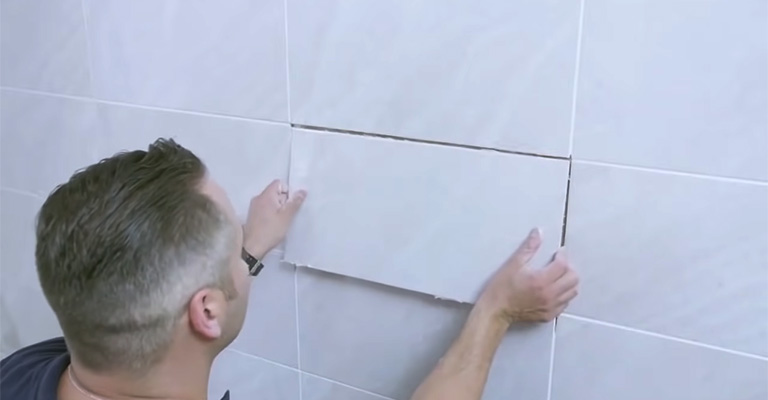Whether you’re renovating a bathroom, kitchen, or any other area with existing tilework, the task of coordinating new tile with the old may seem like a daunting challenge.
Fear not! With a thoughtful approach and a touch of creativity, you can seamlessly blend the new and the old, turning your vision into a harmonious reality.
If you want to coordinate new finishes with old, you want to make it look like they were all installed around the same time.
For new tile finishes to look cohesive with old finishes, you want to make sure that all of the tiles were installed around the same time if you do not want the appearance of NEW mixed with OLD, yesterday, and today.
For example, when you change the tile in your old bathroom and choose something new and trendy, you may hate it once it’s installed.
You can select different finishes for your new house or renovation based on what you like (maybe).
Consider all the patterns, colors, neutral undertones and finish (dull or shiny) when choosing finishes to match existing dated elements to avoid mistakes.
When you are selecting a tile from scratch, it can be extremely challenging to coordinate it with the existing colors and undertones in your home, so if you have a tile that clashes, it relates to that!
How to Coordinate New Tile With Old Tile?
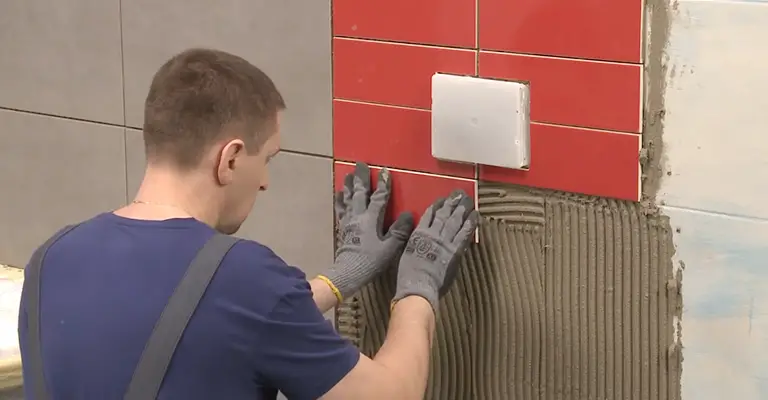
When it comes to creating a unique design, coordinating tiles can be an excellent choice. Regardless of your path, you should always consider the overall effect you hope to achieve.
When you renovate your home, you will need to combine new tile with old tile to give attractive and long-term results.
In this article, we will show you how to coordinate tiles in your home so that you can beautify it. Bringing old and new tiles together can create a tricky design challenge.
If you’re not careful, your space may end up looking a little mismatched and unappealing. By planning ahead and taking your time, you will be able to avoid this.
It’s time for you to put in a new tile, but you’re unsure how to coordinate it with the old one. This guide will help you accomplish the perfect match.
Start by Assessing the Existing Tile
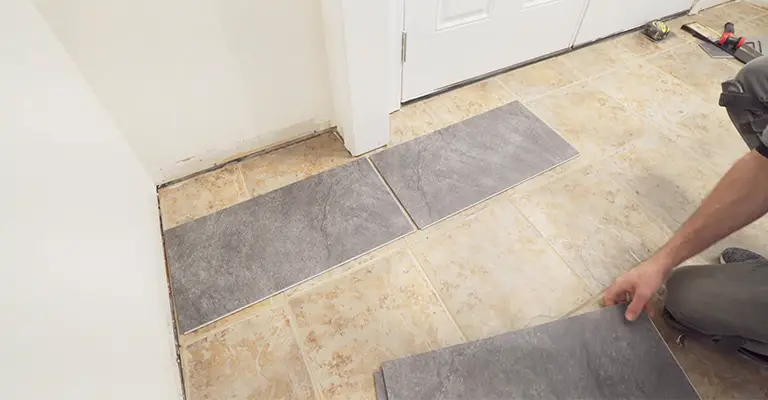
You should carefully examine the old tile to coordinate a new one that complements it. You should assess your space’s overall color scheme.
You’ll have more options for choosing a new tile if your old tile is neutral in color. It is important not to select a color tile that is too similar to your old tile, as it can create a visually unappealing appearance.
Think About the Overall Shape
It is important to consider the old tile’s shape when choosing your new tile. Depending on whether your previous tile is square or rectangle, you may wish to select an equivalent square or rectangle tile.
A cohesive look will be more effortless if your new tiles are in the same color family. To add visual interest, you might consider choosing a different-shaped tile if you have an irregular-shaped tile.
A round tile in a square room, for example, can add whimsy to the space. When it comes to choosing a tile’s shape, consider the style you want to achieve.
By doing this, you’ll be able to ensure that the look of your new tile is perfectly coordinated.
Pattern Is Also Important
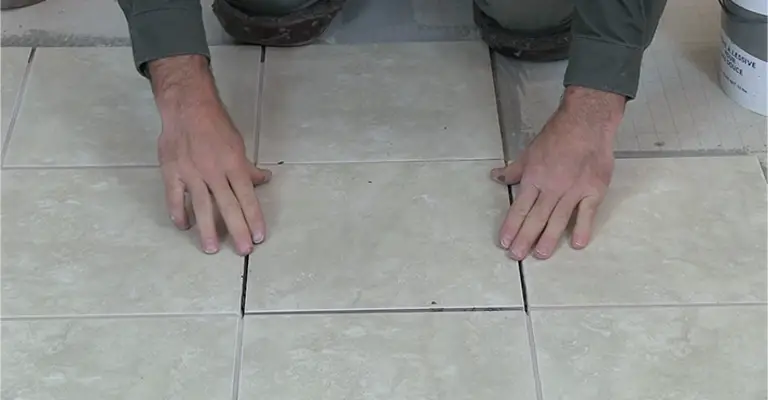
Besides shape, the pattern of your old tile can also impact how your new tile looks. Perhaps your old tile has a busy pattern, so you might want to replace it with a tile with a more muted design.
Your space will be more visually balanced as a result. Choosing a tile with a more intricate pattern may be better if your old tile has a very simple pattern. Adding this will make the room look deeper and more interesting.
If you’re choosing a tile pattern, consider both your personal style and the overall look you want for it. Make sure you experiment and find the perfect pattern for your room.
Pay Attention to the Size of Your Old Tile
Taking your old tile’s size into account is important. If your old tile is small, replacing it with one of the same size may make sense. An easy way to coordinate a new tile is to make the transition seamless.
Consider replacing your old tile with a smaller one if the old one is large. It will contribute to a more updated look for your home and help you achieve the desired aesthetic.
The size of your tile greatly impacts the overall look of your space, so it’s essential to choose the right size for your property. Therefore, don’t be afraid to make changes to the size.
Select a New Tile That Complements the Old Tile
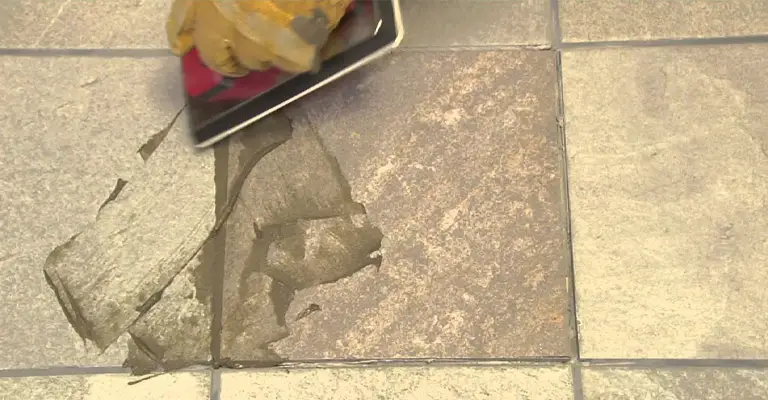
The more you understand the existing tile, the easier it will be for you to find a complementary tile. The color and style of a tile are important factors to consider when coordinating it.
To choose a tile, try to choose one that looks similar to the old one or one that is complementary in color to the old one. Taking the style of your space into consideration is also important.
Creating a modern space requires a simple, clean design. Choose a tile with an intricate design if your space has a more traditional style. This will create a more unified look in your room.
What to Do When the Tiles Don’t Match?
You do not need to despair if you find yourself in a situation where the tiles don’t quite match. If you want to work with tiles in your space, there are a few things you can try.
Adding grout between old and new tiles can create a visual break. It will also help camouflage any differences in color or pattern. In addition to trim, you can also use molding to distinguish between two tiles.
It’s a great way to blend the tiles without getting them identical. Remember that imperfections possess their charm and character, no matter what you do. Your tile can take on a unique look if you embrace its slight differences.
Should All Bathroom Tiles Match?
Choose a set that includes both floor and wall tiles if you’re leaning toward matching tiles. You will achieve a cohesive appearance throughout the bathroom by doing this.
Neither approach has any inherent advantages or disadvantages. Creating a clean and elegant bathroom tile design by matching tiles is possible.
However, adding different kinds of tiles to the same space can add personality and visual interest. The decision is ultimately influenced by personal taste and the bathroom’s look.
Select ones with complementary colors, patterns, and textures to mix and match tiles. A unified look will be achieved by linking the different elements together.
How to Ensure the New Tile Matches the Old?
Take samples of your old tile to a tile shop or hardware store if you are trying to match a new and old tile. Doing this ensures you find a close match in color, texture, and pattern.
In addition, it’s essential to consider the overall design of your space when choosing a new tile. Choose tiles with similar patterns and colors if you want a more traditional look. By doing so, you will be able to create a sense of continuity in your design.
It is possible to achieve a contemporary look by combining and contrasting materials, shapes, and textures. This will make your space look more attractive and deeper. Choosing the right match for old tiles allows for a cohesive and polished look.
Is It Ok to Mix Matte and Glossy Tiles?
A common question at our tile store is whether glossy and matte tiles can be mixed. In short, yes. The look of this type is quite common and can be used in a variety of ways to add texture to your interiors in a quiet yet beautiful manner.
It has a softer, more matt finish that produces muted colors and a velvety feel, while gloss tiles reflect light more and have a shinier finish. Adding depth and dimension to any room is possible by combining these two finishes.
Mixing tile finishes requires considering what type of aesthetic you are trying to achieve. A matte wood-look tile paired with a glossy stone-look tile will give your bathroom a more natural look.
Additionally, if you prefer a more modern look, you can create a stunning accent wall or backsplash by combining matte and glossy glass tiles.
Making Coordinate Tiles Work for You
You can enhance your home’s décor with coordinated tiles. Whether you use them as accent pieces or create a whole mural out of them, these versatile tiles add a touch of personality to any space. Using coordinate tiles to your advantage can be made easy by following these tips:
- The use of grout allows for the creation of contrasting patterns and colors. You can change the appearance of your coordinate tiles by using different grout colors.
- Consider how you will place your tiles creatively. You can use your coordinate tiles to create patterns or groupings rather than simply lining them up in rows.
- You can create visual interest by arranging different sizes and shapes of coordinate tiles. You can create an exciting design by mixing and matching them using coordinate tiles.
- Choosing a color scheme that complements your existing décor is crucial. With coordinated tiles available in various colors, finding a design that works with your current decor should be no problem.
How Do You Choose Tile Combinations?
Combining tiles requires consideration of several factors. As a starting point, consider the overall style of your space. The traditional look can be achieved by choosing tiles with the same color and pattern.
You can create a more contemporary look by mixing different shapes, sizes, and textures. You should then consider what you will use the space for.
The materials you choose for tiling a backsplash or shower should be waterproof and easy to maintain. In terms of tile flooring, durability and slip resistance are essential factors. Then, don’t forget to pay attention to your aesthetic.
You should choose tile combinations that match your personal style and provide you with a sense of well-being every time you look at them. Making a tile combination you’ll love will be easy with these guidelines in mind.
How Do You Find the Exact Tile?
You should ensure that the new tiles match the old ones well when replacing them. There can be challenges, however, if you don’t have any extra tiles or if you forget where you got your tiles.
It will take a bit of investigative work to identify the exact match in this situation. To get started, you should carefully examine your current floor tiles.
Note the size, shape, color, and any other distinct features. The tile can be helpful for you later if you take a photo.
Search online for tile retailers or visit your local home improvement store. Send the staff a photo of yourself and a description of what you’re looking for. They will hopefully be able to help you locate the exact tile you need.
They won’t likely have an entire box of the same tile in stock, so expect to order a small quantity. You might need to purchase a sheet of similar-looking tiles for a tile that no longer exists and then cut them down to size.
Tips for Matching New Tile With Old Tile
You should keep these things in mind when matching an old tile with a new one:
- Your space can be enhanced with imperfections to give it character and charm. Make your home look unique by embracing any differences between tiles.
- Using grout to create a visual break between your old and new tiles may be an option if the tiles don’t quite match. The two types of tile might be separated physically with trim or molding.
- If you need a more contemporary look, try mixing and matching shapes, sizes, and textures.
- Make sure the tile you select fits the style of your space. Choosing traditional designs and colors is best if you want a classic look.
- To find the closest match in color, pattern, and texture, take samples of your old tile to your local tile retailer or hardware store.
Bottom Line
When it comes to matching new tiles with old tiles, it can be pretty challenging. If you want a new tile to match an old one correctly, color, pattern, and size must be considered.
The best way to create a similar style is to use similar colors or styles. There is no better way to create a border between different tiles than with a tile trim!
The trim piece is a great way to tie together different designs, whether you are inserting a mosaic medallion or backsplash inset between subway tiles or separating decorative borders from larger field tiles.

